
Though Steven Spielberg's 1993 blockbuster Jurassic Park continues to stun viewers with its groundbreaking visual effects, the film employs relatively little CGI for its dinosaurs, and many of the more iconic shots are based on practical effects. When the film was originally released, CGI was still something of a novelty within the film industry. Although films like Terminator 2 had proved that CGI could be useful for animating liquid metal cyborgs, bringing dinosaurs to life by computer was another matter. In fact, Spielberg's original plan was to employ stop-motion techniques and full-scale animatronics for scenes that required full-range dinosaur movement. Instead of relying too heavily on CG effects, Spielberg and his team ended up using a masterful blend of practical effects mixed with only a few brief CGI-based sequences.
Many viewers have noted that while the original Jurassic Park is 27 years old, the visuals continue to impress, and they're arguably more convincing than recent entries in the franchise. Among other discriminating choices, including Spielberg's masterful use of scale framing, one secret to the original film's success is that the director only uses CGI as a last resort. In fact, viewers might be shocked to discover that, despite its 120-minute running time, Jurassic Park carries a mere 6 minutes of CGI work. Only when he viewed the impressive results of a CGI T-Rex test run from ILM (Industrial Light & Magic) did Spielberg give serious consideration to using computer-rendered dinosaurs at all.
With Jurassic World 3 slated for release in 2022, fans of the franchise have cause to revisit the original. Although recent entries in the series have created interest within a younger viewing demographic, some fans of the original have argued that Spielberg's sparing use of CGI makes for a superior viewing experience. Here's a rundown of some iconic Jurassic Park dinosaurs, along with an explanation of what's practical and what's CGI.
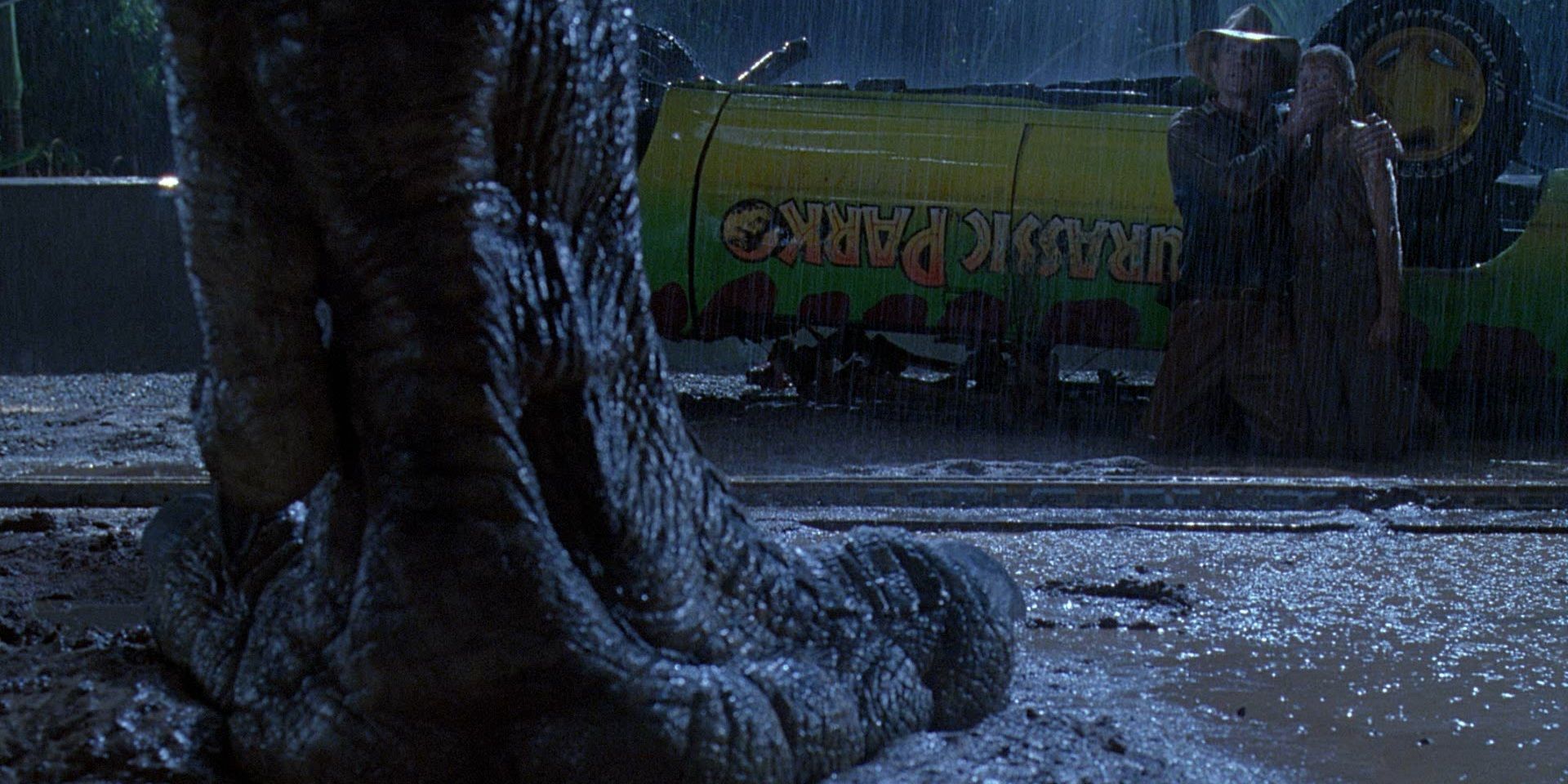
Arguably, the most beloved character in Jurassic Park is not Ian Malcolm (Jeff Goldblum), Ellie Sattler (Laura Dern), or Alan Grant (Sam Neill), but the unnamed T-Rex. With its imposing teeth and permanent scowl, the animal oozes character, and carries an eerie resemblance to Dustin Hoffman in Spielberg's Hook. Most of the Rex's screen time occurs during a scene in which the animal breaks out of its paddock to assault a pair of Ford Explorers and their human occupants. Surprisingly, many of these paddock shots were accomplished using one of two full-scale animatronic T-Rexes designed by master effects pioneer Stan Winston. This means that the actors are responding to a highly detailed, fully articulated monster rather than a green screen. The scene holds up remarkably well in 2020, as does its star dinosaur.
Of course, not all T-Rex scenes could be accomplished by practical means. Sequences that show the Rex engaging in full-range motion could only be completed with CGI. After the paddock attack, for instance, there's a scene in which the T-Rex charges a Jeep driven by Robert Muldoon (Bob Peck). Because the Rex needs to move at a full-speed lope, this sequence is also CGI. The CGI Rex matches the animatronic seamlessly, and the shot remains convincing. The CGI Rex also appears later to attack a herd of Gallimimus and to take part in the raptor battle at the film's climax. Because viewers have already accepted the reality of the highly detailed animatronic T-Rex, it becomes easier to accept the CGI Rex when it finally shows up.
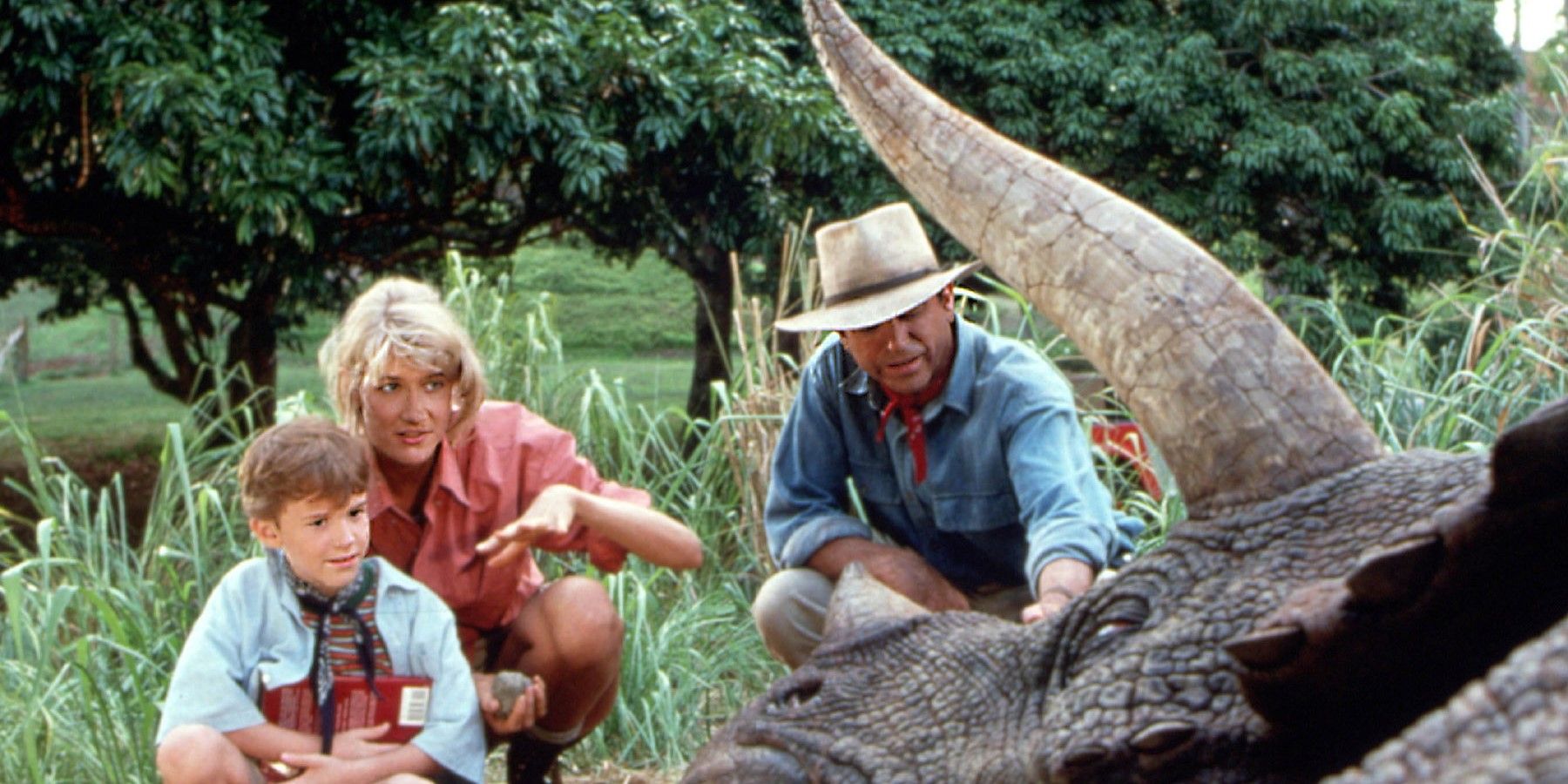
The Triceratops that Ellie Sattler attends to early in the film is essentially an outsized puppet. Winston's team sculpted the creature's highly detailed, pebble-textured skin by hand, along with the realistically cracked horns. Control rods were inserted beneath the animal's flanks in order to give the appearance of labored breathing.
Were such a scene to be filmed in a more contemporary Jurassic Park movie, SFX teams might opt for CGI methods, since they allow for more flexibility and a higher degree of control. Spielberg, however, trusted Winston's practical effects for close interactions between dinosaurs and human characters, and the high degree of believability adds to the performances of actors like Laura Dern and Sam Neill, whose character has been absent from the franchise since 2001's Jurassic Park 3.
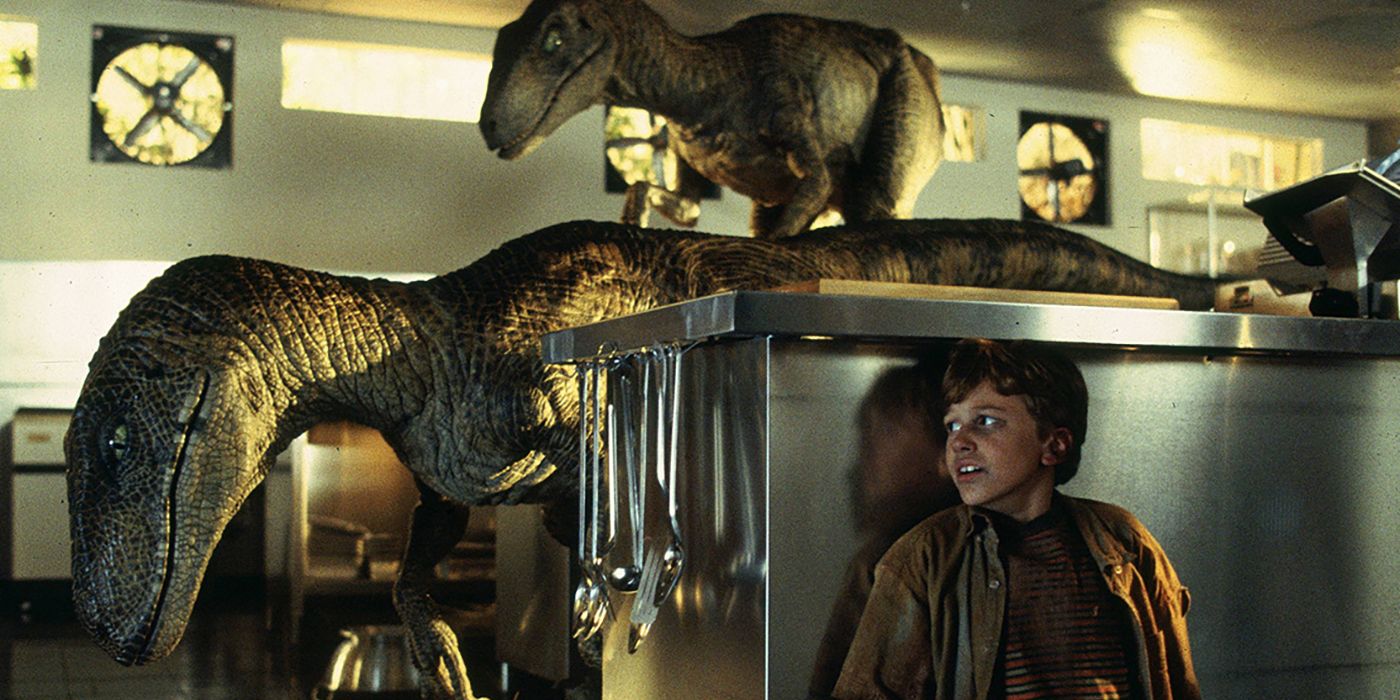
Jurassic Park's most famous raptor scene takes place when two of the cunning predators track Lex (Ariana Richards) and Tim (Joseph Mazzello) into the park's kitchen. The vast majority of raptor shots, including the sequence where one raptor learns how to open the door, were accomplished by actors in raptor suits. Stan Winston also employed a full-scale, six-foot animatronic raptor. Designers even created a pair of raptor legs for performers to wear for a shot where the camera is posted behind a raptor's legs.
Spielberg relied on ILM's CGI only for those shots that required wider shots of fluid raptor movement, including the moment when the raptors snap at one another. As with the T-Rex, Spielberg also relies on CGI raptors during the climactic T-Rex battle, and during scenes in which the raptors execute highly athletic leaps that can't be portrayed with puppets or animatronics.
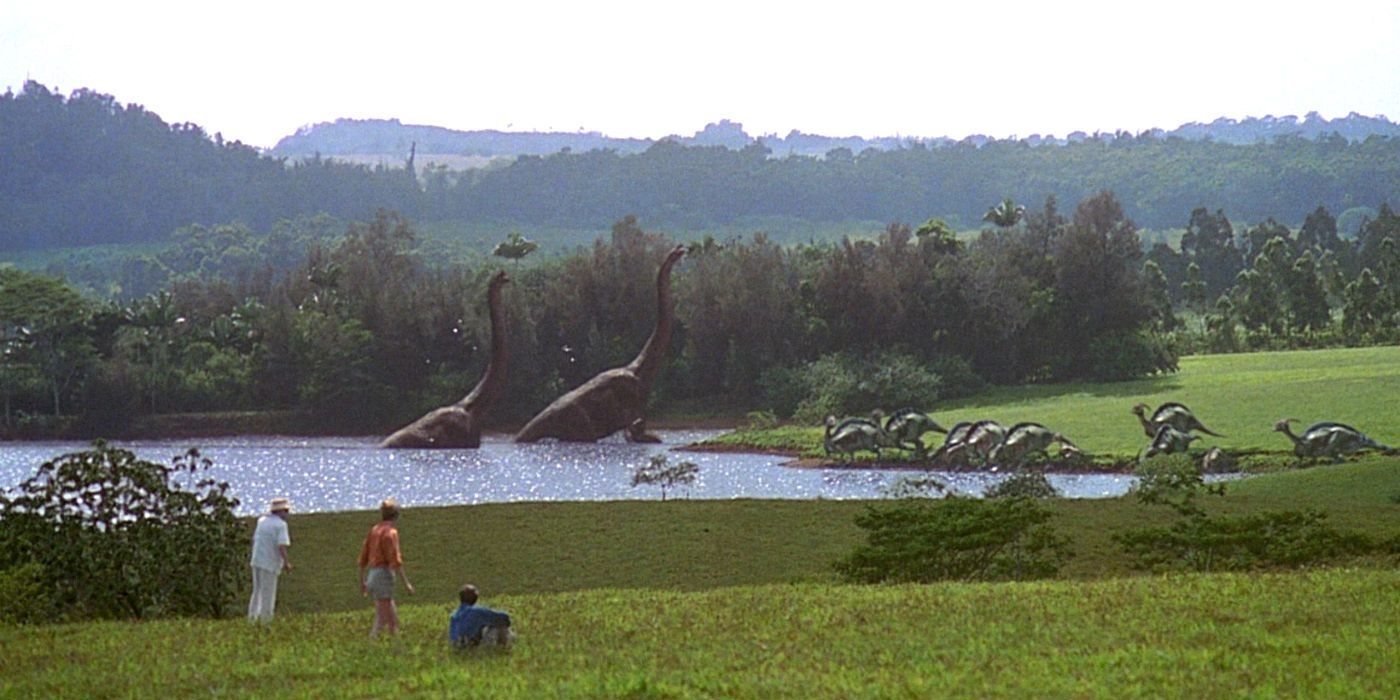
Curiously, many of the film's "veggiesauruses" are CG, including the dramatic first glimpse of a browsing Brachiosaurus. Later, when Lex, Tim, and Alan hide out in a tree, there's a wider establishing shot featuring an entire herd of CG Brachiosaurs. When one of the animals wanders close to investigate Lex, Spielberg wisely switches to a practical animatronic of the animal's neck and head.
On the other hand, the herd of Gallimimus that Alan and the kids encounter later in the film is based exclusively on CGI. In order to model these creatures, ILM studied the posture and physiology of real-world flightless birds like ostriches and chickens, which helps explain why the Gallimimus appear so birdlike. At the time, Spielberg's composite shots, which feature human actors, practical backgrounds, and CGI animals layered in, were considered revolutionary.
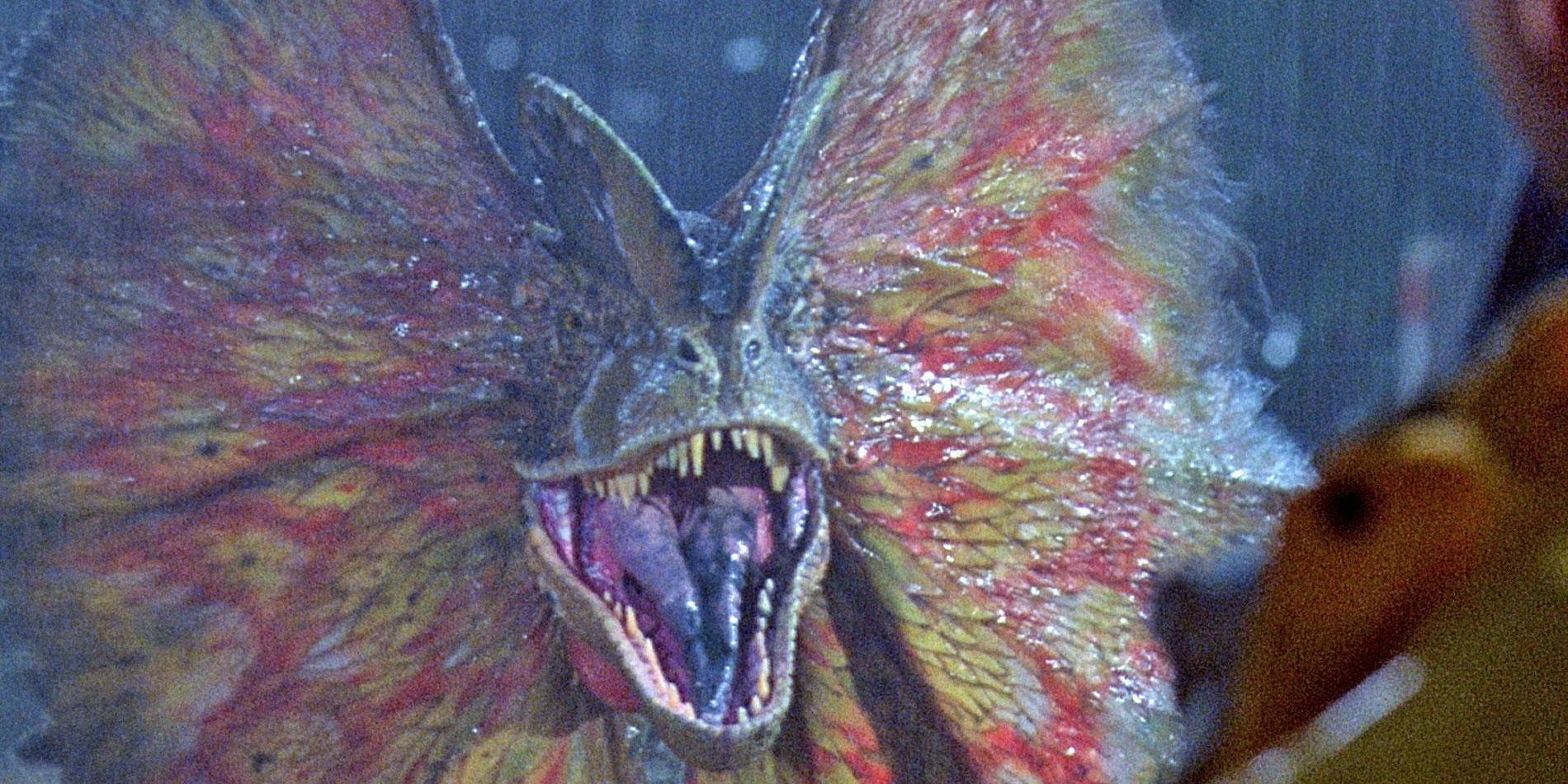
Again, there seems to be a trend for building predatory dinosaurs via practical means. At one point in the film, conniving computer programmer Dennis Nedry (Wayne Knight) enters the paddock of a Dilophosaurus — a diminutive predator with an elaborate neck frill and a penchant for spitting venom into the eyes of its victims (though there's little evidence that the actual Dilophosaurus possessed such features).
Like various other dinosaurs, this creature was built as a full-scale, cable-controlled puppet. The Dilophosaur's spitting mechanism was adapted from a paintball gun, and the venom was mostly K-Y Jelly with food coloring. Like the T-Rex, this dinosaur projects loads of character and menace — all by way of practical means.
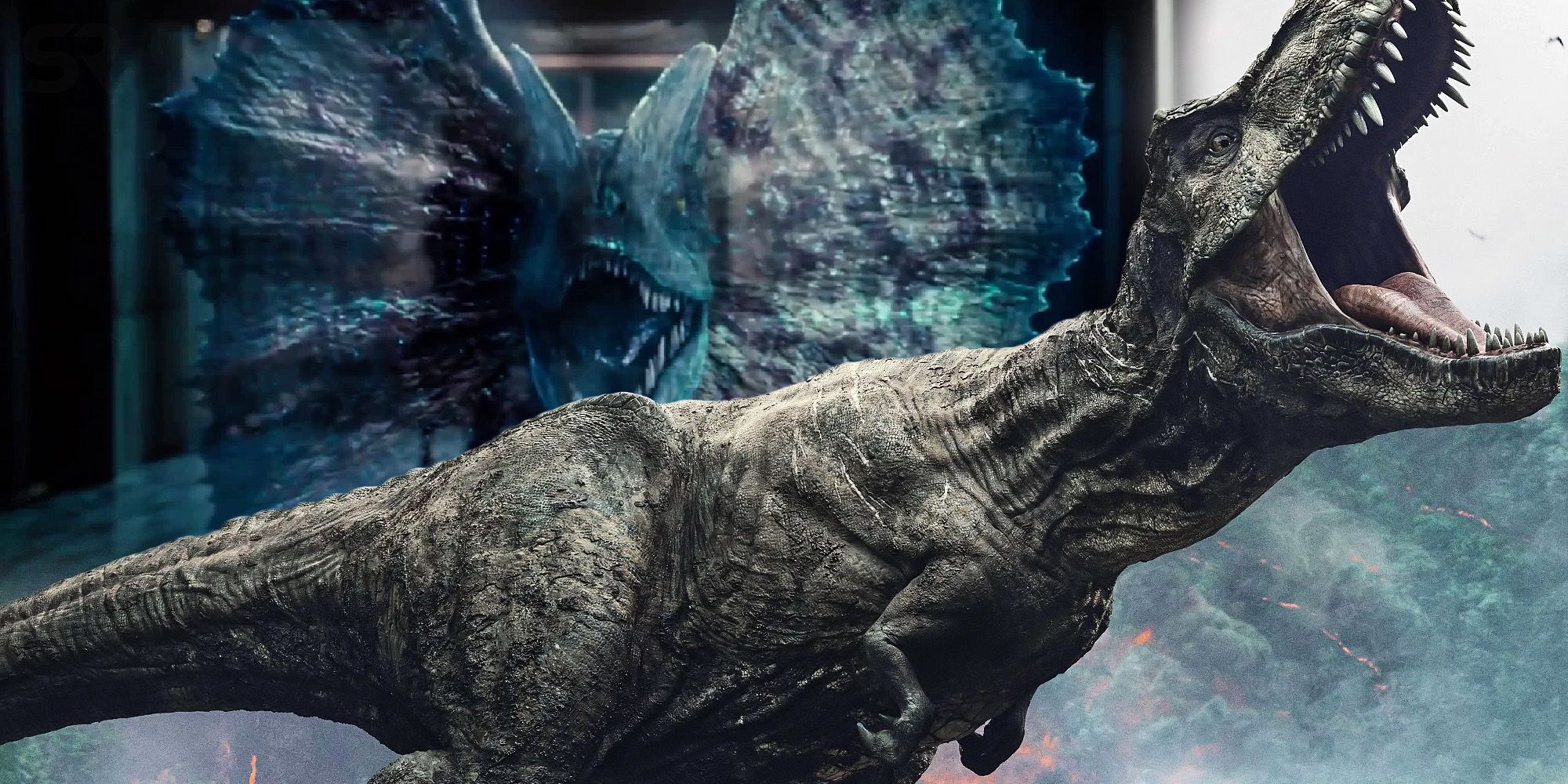
For better of worse, the film industry has seen monumental changes since Spielberg first experimented with CGI dinos. CGI is now the industry standard for portraying large, fearsome creatures. A certain demographic of viewers will always pine for the days when films like Jurassic Park relied mostly on practical effects, including masterfully crafted puppets and animatronics. It's unlikely that, with its roster of new dinos, Jurassic World 3 will involve extensive use of practical effects, but with any luck, the film's use of CGI will at least show the kind of meticulous attention to detail that defines Spielberg's 1993 classic.
from ScreenRant - Feed https://ift.tt/3n75oR6






0 Comments
Please don't use vulgar comments and avoid discussion on Religious matters